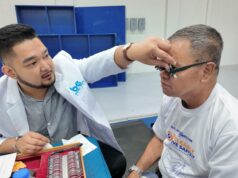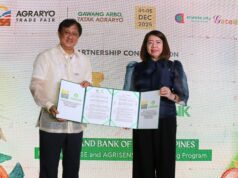Aquino cited the economic gains of his administration which he said “regained the confidence both in ourselves, and the confidence of investors here and around the globe.”
He also said the CGC is “another major expression of such confidence” as it is one of the biggest ever joint undertakings between the government and the private sector.
“This economic zone will cover 9,450 hectares and its development will cost around P607 billion, most of which will be covered by partners from the private sector. Just to give us an idea of the scale, Bonifacio Global City is roughly about 200 hectares,” Aquino said.
“By the time of its completion, it is envisioned to be a city in every sense of the word… eventually accommodating an estimated 1.12 million residents and 800,000 workers,” Aquino added after laying a time capsule as part of the ceremony near the Capas National Shrine here.
“This city also embodies our vision for a more resilient Philippines.
It shows that we are learning from the lessons of the past, and putting more thought into securing ourselves from the risks brought about by climate change,” the president also said.
CGC is a project of the Bases Conversion and Development Authority (BCDA) that is planned to cater to government agencies, businesses, educational institutions, agri-forestry research as well as innovation hub, industry and tourism.
The CGC development will transform the way cities are conceived and built and set a new benchmark in the Philippines and the world, according to BCDA president and CEO Arnel Paciano Casanova.
CGC’s favorable geological conditions make it less vulnerable to earthquakes as the absence of a fault line under or within its vicinity makes the site ideal for longterm development.
The city will also be spared from the damaging effects of super typhoons since its neighboring Zambales Mountain Range and the Sierra Madre Mountain Range will serve as natural barriers and flooding will also be remote due to its high elevation.
“Truly, as interest in our nation grows— and as markets develop across the country— projects like these are vital. Along with investing in our workforce and spending on critical infrastructure projects, we need to develop viable economic hubs, not just in Metro Manila or Cebu, but also in provinces with high growth potential.
And I am particularly glad that, when I step down in office and have more quiet time to spend in Tarlac, I can watch over the development of this city and hopefully with a mayor who is smiling at the successes,” Aquino said.
“Over the past five years and nine months, our country’s fortunes have seen a dramatic turnaround. We have witnessed far more progress than we could have imagined, and we can take pride in the fact that we have completely shed the title of Sick Man of Asia, and are now referred to as Asia’s Bright Spot, or Asia’s New Tiger.
Nevertheless, the work towards building a vibrant and inclusive Philippine economy continues, and this project, among others, heralds the next step in our journey, and I am hopeful that we can maintain, if not build on our momentum,” the president said.




